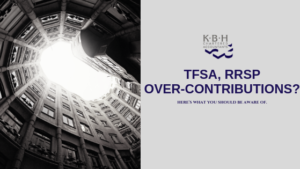Whether you choose to save in a TFSA, an RRSP, or both, it’s important to take the time to understand how the plans work. It’s even more important to keep on top of your available contribution room, or you could get slapped with an over-contribution penalty tax by the Canada Revenue Agency (CRA).
While the taxman does have the ability to waive any over-contribution tax, penalties and debts interest charged as a result of over-contributions, here are two cases where the can CRA show little mercy when it comes to over-contributions.
TFSA over-contribution
If you over-contribute to your TFSA the penalty tax is 1% per month for each month (or part of any month) your TFSA is an over-contribution state. However, there’s a separate, additional over-contribution tax of 1% per month if you contribute to your TFSA after becoming non-resident of Canada. And since a non-resident stops accumulating new TFSA room for each year they are considered a non-resident, you can also face the normal over-contribution tax of 1% per month, on top of the non-resident over-contribution tax, for contributions continued to be made as a non-resident beyond the allowable room.
The CRA will write and advise you that you may have to pay tax on the TFSA contributions that were made as a non-resident of Canada, as well as on the excess contributions to your TFSA. Luckily, the CRA may outline three options for addressing the tax owing. You have the option of applying to the CRA for relief from both the non-resident and excess contribution tax.
Under the Income Tax Act, the CRA has the discretionary power to waive over contribution taxes if the taxpayer “establishes to the satisfaction of the (CRA) that the liability arose as a consequence of a reasonable error” and the taxpayer took steps to remove the over-contribution, along with any income or gains reasonably attributable to the over-contribution, “without delay.”
RRSP over-contribution
Your RRSP contribution limit for a given year is generally calculated as 18% of the prior year’s earned income (up to a maximum of $26,500 for 2019) less any pension adjustment from your employer, plus unused RRSP room from prior years.
As an example, you over-contribute $30,000 and $15,000 respectively into a combination of personal and spousal RRSPs. You had no tax owing for several years and, on advice given, did not file income tax returns for these tax years. As a result, you don’t receive notices of assessment and was thus unaware that you didn’t have enough RRSP contribution room as a result of pension contributions made through your employer and the related pension adjustments.
What happens next? The CRA will inform you that you may have over contributed to your RRSPs and that if so, the excess was subject to a one% per month over-contribution penalty tax. You can also be informed that you have to file RRSP over-contribution (T1-OVP) returns for each year of excess RRSP contributions. You have the right to apply to the CRA for relief from the tax on the over-contributions, penalties, and interest.
In the end, it is always best to double-check what room you have available. Ensure your accountant or bookkeeper is aware of all contributions made so you don’t fall victim to over-contribution penalties.
Unsure what your limit(s) may be? Contact KBH Chartered Accountants for assistance, we’re here to Help You Succeed in all aspects: info@kbh.ca
